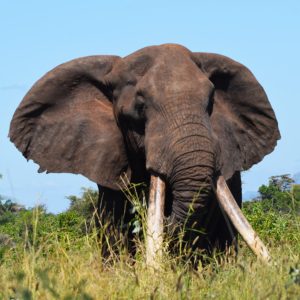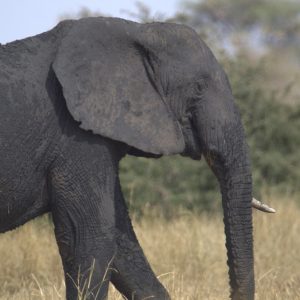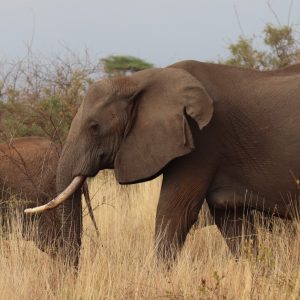How do you ID an elephant?
Every elephant matters – but how do we tell them apart? Born Free’s Saving Meru’s Giants programme monitors and identifies individuals to help provide Hope for Elephants in Meru National Park, Kenya. Irene Kanga and Francis Kago report.
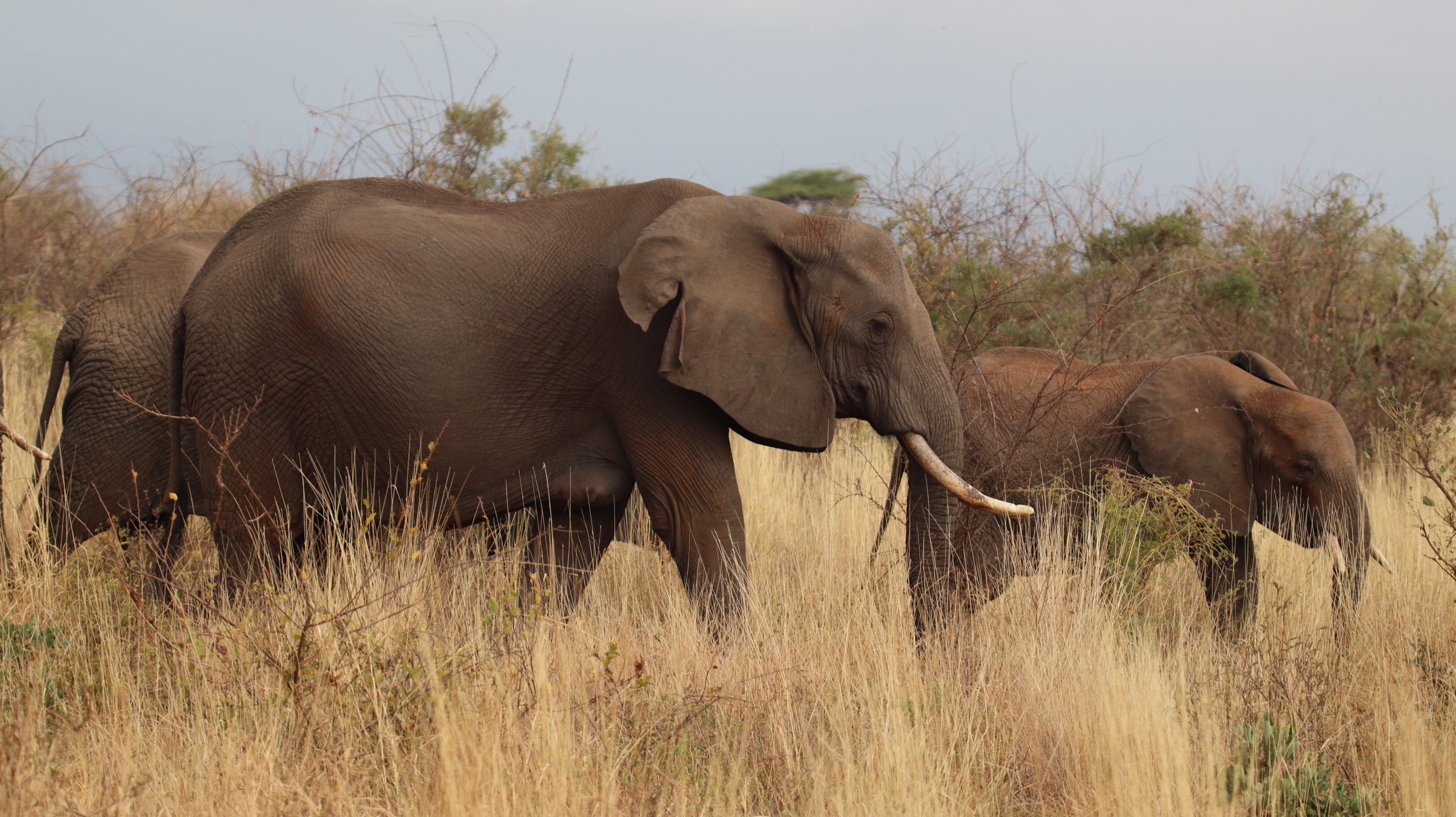
It is critical we provide hope for the elephants of Meru. As a keystone species, elephants play a crucial role in the maintenance of their habitat. Without them, Meru’s natural habitat would collapse – with devastating consequences for all the wild animals and plants in the national park.
Working with local communities, Born Free strives to protect Meru’s elephants, securing the integrity of their habitat and promoting human-elephant coexistence in the community lands surrounding the park. Monitoring the elephants is a critical aspect of these efforts, allowing us to implement effective conservation strategies to safeguard Meru’s elephants for the future.
In elephant conservation, it is extremely useful to know each individual in a population. This gives conservationists a comprehensive understanding of population ‘demographics’ (or statistics), social structures, migratory patterns, and individual health. As part of Saving Meru’s Giants, we regularly monitor and identify individual elephants. Our extensive database will be invaluable to inform our conservation work helping to protect Meru’s elephants.
How do we monitor elephants?
The best time is dawn and dusk, when elephants are most active. Our team currently uses opportunistic sightings – driving around the 336 miles2 (870 km2) park and recording elephants as and when they are seen. Whenever a group is sighted, we scrutinise the group to record all members present recording:
- the size of the group
- the group type (e.g all males or a family)
- the habitat type
- any behaviours (eg whether elephants are feeding or walking etc)
- health status
- whether males are in ‘musth’ (a period characterised by heightened aggression associated with a surge in testosterone)
- or females in ‘oestrus’ (when most receptive to mating).
The estimated age of elephants is also recorded. There are several methods, from recording individuals’ births and knowing their exact age, to rough estimates based on general appearance. Age estimates can be based on shoulder height, back length and footprint length. With experience it’s possible to estimate age using a combination of characteristics such as size, physical development, the length and circumference of tusks, body shape and proportions.
Providing a detailed record of each sighting help build up a picture of the population distribution and seasonal movements, allowing us to prioritise areas for conservation.
How do we identify individual elephants?
Our team aims to identify each elephant on an individual level, building up a database. Meru’s elephants are migratory, moving west and north from Meru to the neighbouring counties of Samburu and Laikipia. Over time, our monitoring will build a picture of which individuals are ‘resident’, spending more time in Meru, and which are ‘transient’, passing through and not regularly seen.
Looking across seasons, we will see when elephants rely on the park’s resources and which areas are most crucial to their survival, allowing us to prioritise both the area and timing of conservation efforts. Monitoring individual elephants will also provide a detailed and nuanced understanding of behaviour, social relationships and health that we would not otherwise understand.
Elephants are surprisingly varied and can often be readily identified from physical characteristics. Our team uses a combination of characteristics to ID each one. Find out more below:
SEX
Adult elephants are strikingly sexually ‘dimorphic’ (males and females have distinct physical differences) in body size, tusk shape and weight, head shape and external reproductive organs, which easily allows you to recognise males and females.
Noting their gender immediately narrows down the elephant for future identification.
TUSKS
Elephants can easily be distinguished by their tusks. Each usually has two tusks, although some never develop them. Tusks can be different shapes, sizes and lengths. They grow, change shape, break and re-grow. Tusks can be splayed, skewed, missing right or left, broken right or left, grooved, long, straight, higher left or right, short, thin, thick, upcurved, crossed or convergent.
With this astonishing variety, tusks can therefore be a key indicator used to identify an elephant.
EARS
The ears of African elephants are the largest of any living animal. Therefore, it is perhaps unsurprising they can greatly vary between individuals, making them another key component in identifying individuals.
Ears often have holes, nicks, notches, pinpricks, tears and prominent veins on the edges and can greatly vary in size, shape and ‘floppiness’.
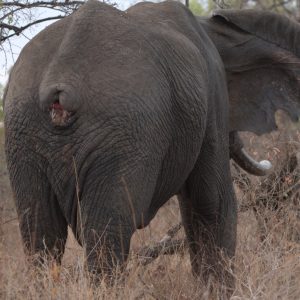 UNIQUE CHARACTERISTICS
UNIQUE CHARACTERISTICS
As well as gender, tusks and ears, our team also looks for any unique characteristics such as lumps on the body, lameness in a leg, prominent scars, or even missing tails – as is the case with the appropriately named male ‘Notail’ (pictured).
These unique characteristics are crucial for individual elephant identification.
What is SEEK?
Combining all these observations, our team uses the SEEK methodology to create an individual ID code for each elephant, which is added to our database. The code allows us to identify individuals on future monitoring patrols. SEEK stands for System for Elephant Ear-pattern Knowledge, and has six sections. These are Sex, Age, Tusks, Ears, Extreme features (substantial ear tears, notches or holes) and Special features (scars, deformities, missing tail, etc).
Each elephant assigned to the database is given a unique code based on their features and which follows a particular format (see box). This means any elephant in the database can be ID’d just by looking at their physical characteristics.
Elephant ID Code:
- Either B (bull) or C (cow)
- Numbers assigned based on their age bracket
- Presence (1) or absence (0) of each tusk
- Starting with the right ear, numbers assigned based on position of most prominent tear and notch, followed by the second most prominent tear and notch. This pattern of four numbers is repeated for the left ear
- Presence (1) or absence (0) on each ear of extreme features (ear tears, notches or holes)
- Presence (1) or absence (0) of special features (scars, deformities, missing tail, etc) on the left ear, right ear and body.
Through regular monitoring we can begin to understand and better protect elephants and their habitats across the Meru ecosystem. Elephants are a keystone species and without them the complex ecosystem would cease to exist as it currently does. Born Free strives to encourage co-existence between humans and elephants through humane and community-led solutions to reduce conflict, educating local communities to help secure a better future for elephants. This work depends on a comprehensive understanding of elephant habitat use, movement patterns and the composition and demography of the population. So, without knowing Meru’s individual elephants, this would not be possible.
You can help our teams to continue monitoring Meru’s elephants by donating today. Your donation really will give Hope for Elephants.

